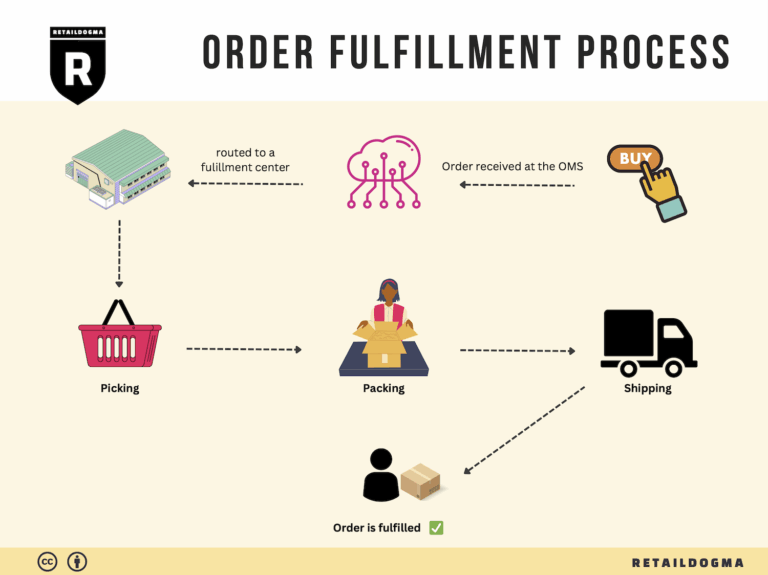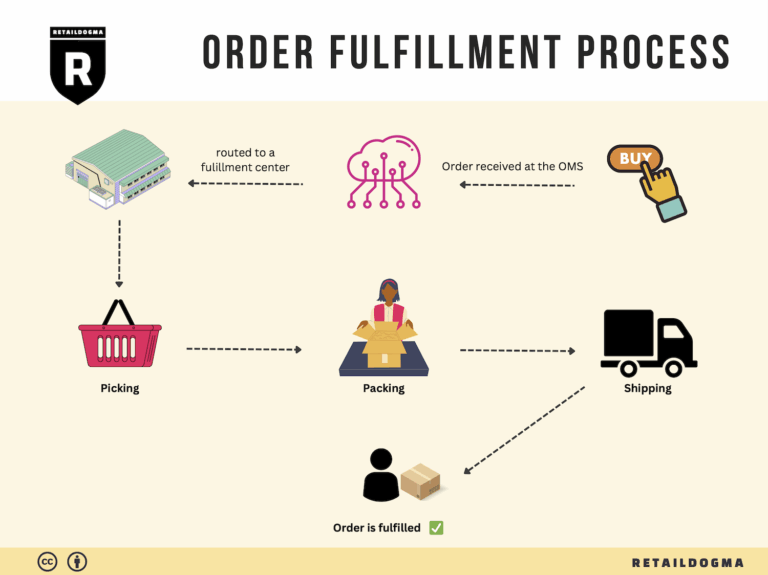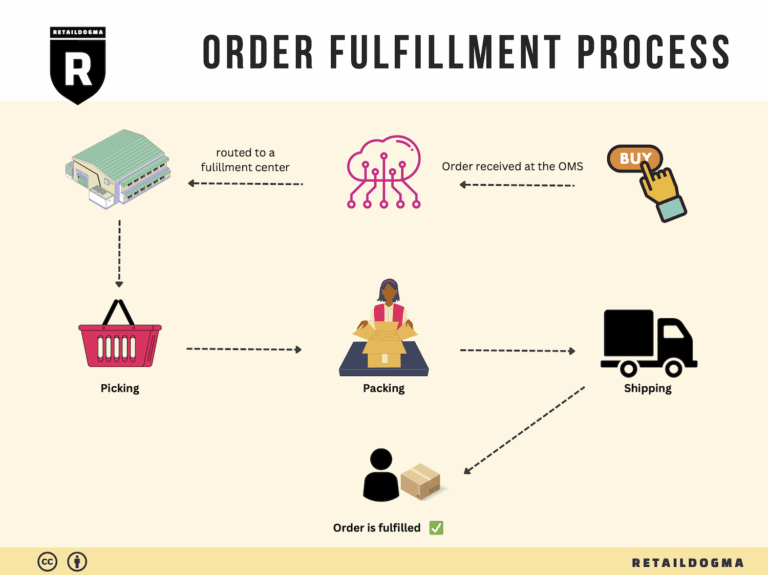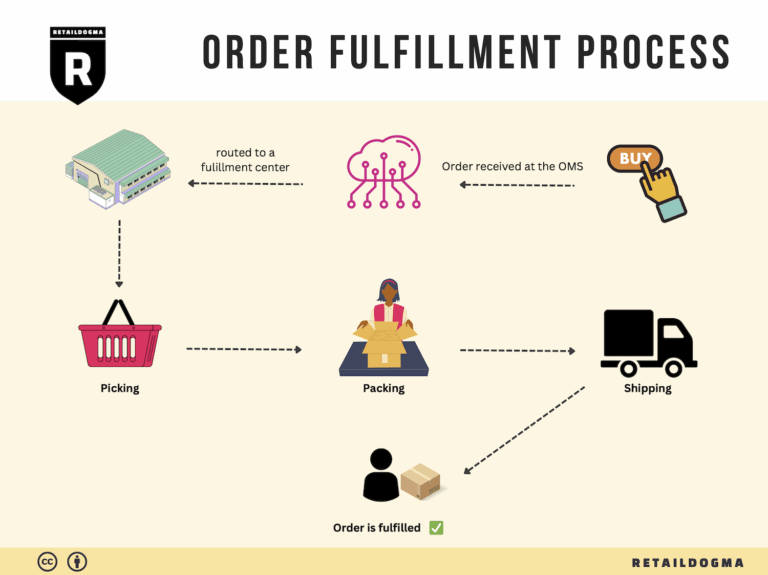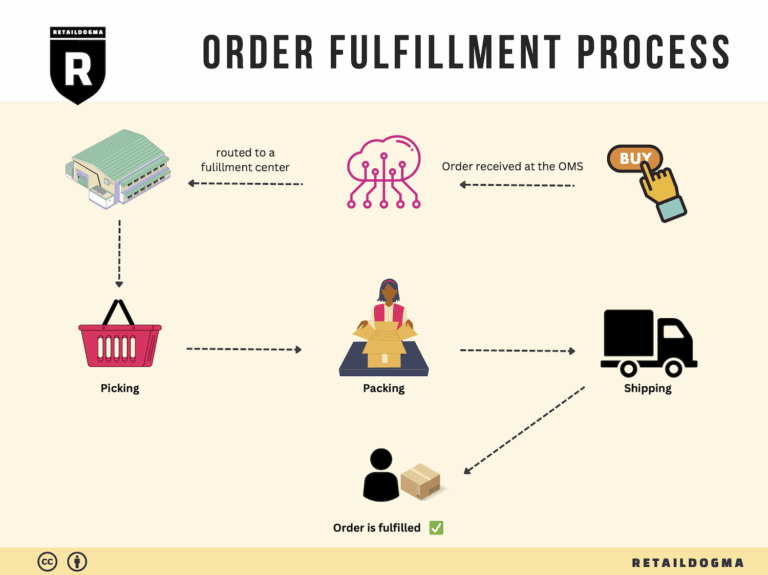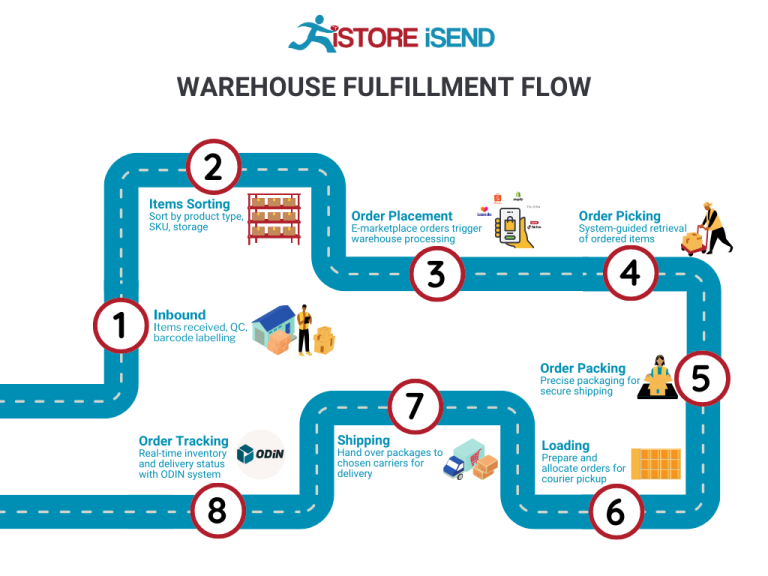How Order Fulfillment Works: A Step-by-Step Guide for Businesses
What is E-commerce Fulfillment? An Introduction for Growing Businesses
Navigating the Challenges of Order Fulfillment
As your e-commerce business begins to grow, you may find yourself grappling with an overwhelming number of tasks, particularly when it comes to packing and shipping orders. The excitement of increased sales can quickly turn into stress as you struggle to manage logistics efficiently. The process of fulfillment—getting a product from your warehouse to your customer’s doorstep—can become a daunting challenge, especially when you’re trying to maintain high standards of service while scaling operations.
At its core, e-commerce fulfillment encompasses all the steps involved in delivering products to customers, from inventory management and order processing to shipping and returns. As your business expands, understanding the various fulfillment models available becomes crucial. This guide will delve into two popular options: Third-Party Logistics (3PL) and Fulfillment by Amazon (FBA). Each model has its unique advantages and considerations, allowing you to choose the best fit for your business needs.
Key Components of Fulfillment
We will explore the core services associated with e-commerce fulfillment, including inventory storage, order picking, packing, shipping, and customer service. Understanding these components will help you identify the services that align with your operational goals and customer expectations.
Choosing the Right Fulfillment Partner
Selecting the right fulfillment partner can significantly impact your business’s efficiency and customer satisfaction. We will outline key factors to consider when evaluating potential partners, such as their technology capabilities, shipping options, and scalability to meet your growing demands.
Understanding Fulfillment Pricing
Additionally, we will break down the various pricing structures associated with different fulfillment options. Understanding these costs is vital for managing your budget and ensuring profitability as you scale your e-commerce operations.
Empowering Smart Logistics Decisions
Ultimately, this guide aims to empower e-commerce business owners, operations managers, and entrepreneurs with the knowledge needed to make informed decisions about their logistics. By demystifying the fulfillment process and providing practical insights, you can streamline your operations and enhance customer satisfaction, setting your business up for sustainable growth in the competitive online marketplace.
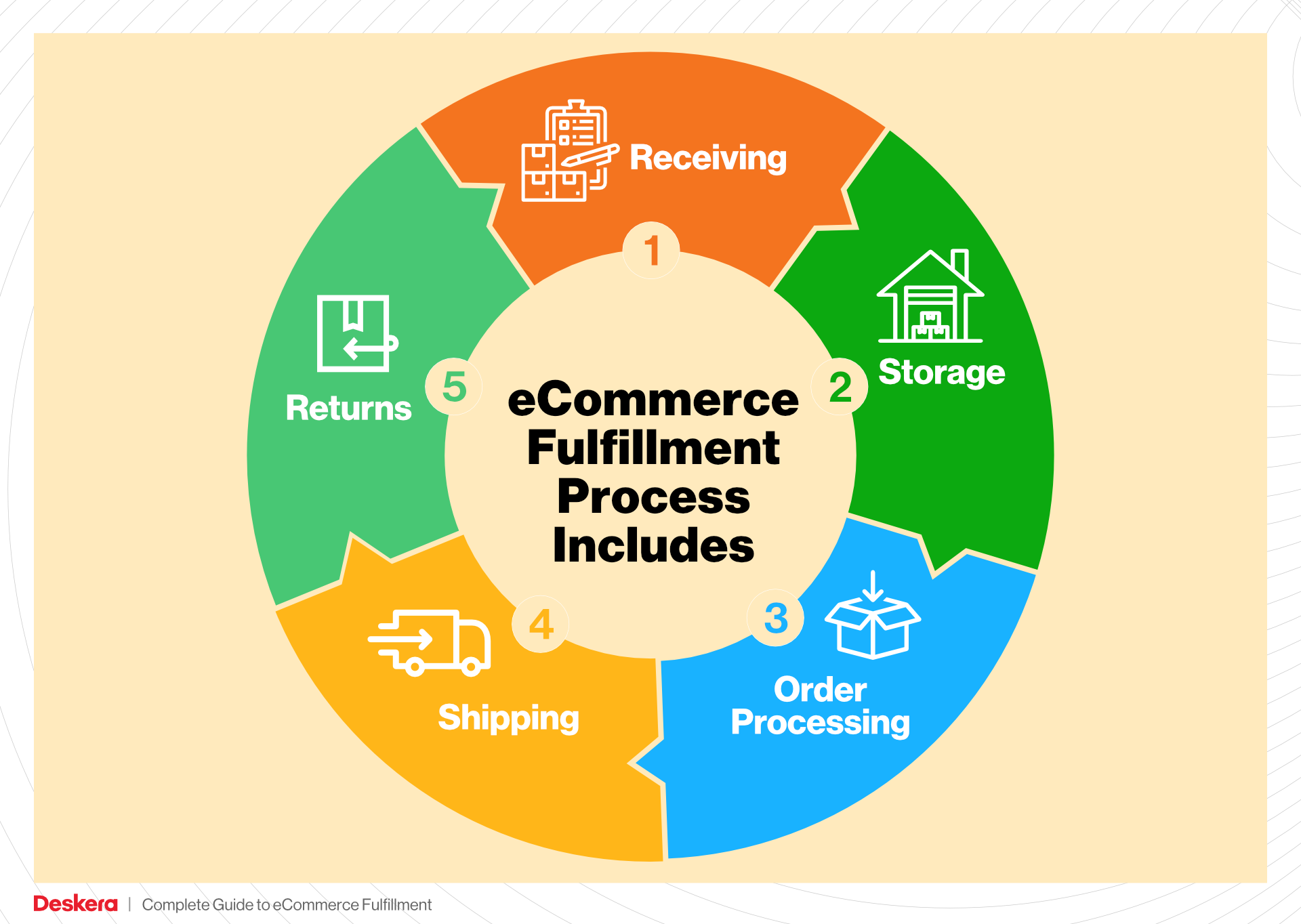
What You’ll Learn In This Guide
- What is E-commerce Fulfillment? An Introduction for Growing Businesses
- The Order Fulfillment Process: From ‘Buy’ Button to Customer’s Door
- Comparing Fulfillment Models: In-House vs. 3PL vs. Dropshipping
- A Deep Dive into Amazon FBA: Pros, Cons, and Who It’s For
- Core Services Offered by Fulfillment Centers
- How to Choose a Fulfillment Partner: A 6-Point Checklist
- Understanding Fulfillment Pricing: A Breakdown of Common Fees
- Frequently Asked Questions (FAQs) about Fulfillment
- Conclusion: Is Outsourcing Fulfillment the Right Move for Your Business?
- Important Disclaimer
The Order Fulfillment Process: From ‘Buy’ Button to Customer’s Door
1. Receiving Inventory
The order fulfillment process begins with receiving inventory, a critical step that lays the foundation for smooth operations. When products arrive at your fulfillment center, they must be logged into your inventory management system. This is where Stock Keeping Units (SKUs) come into play. Each product should have a unique SKU, which helps in tracking inventory levels and managing stock efficiently.
During this phase, the received goods are checked against purchase orders to ensure accuracy in quantity and quality. Any discrepancies, such as damaged items or incorrect quantities, should be addressed immediately. Proper receiving procedures help reduce errors later in the fulfillment process, ensuring that customers receive the correct items and that your inventory data remains accurate. This step is crucial for maintaining inventory integrity, which directly impacts customer satisfaction and operational efficiency.
2. Warehouse Storage
Once the inventory is received and verified, it is then stored in the warehouse. Effective warehouse storage is essential for optimizing space and ensuring easy access to products. This is where the concept of location management comes into play. Products should be organized logically, often based on their SKU, size, or sales velocity, to facilitate quick retrieval.
Proper storage techniques not only maximize warehouse space but also minimize the time taken to pick items for orders. Utilizing vertical space, implementing shelving systems, and creating designated picking zones can enhance operational efficiency. Additionally, maintaining an organized warehouse reduces the risk of misplaced items, ensuring that your fulfillment process runs smoothly and that orders can be processed swiftly.
3. Order Picking
The next step in the fulfillment process is order picking, where items are selected from the warehouse to fulfill customer orders. This stage is vital as it directly influences the accuracy and speed of order fulfillment. A key tool in this step is the pick list, which outlines the items needed for each order, including their locations within the warehouse.
Efficient order picking methods, such as batch picking or zone picking, can significantly reduce the time taken to gather products. Implementing technology, such as barcode scanners or mobile devices, can further streamline this process by minimizing human error and speeding up the picking time. Accuracy in this step is paramount; errors can lead to customer dissatisfaction and increased return rates, which can be costly for your business.
4. Order Packing
After items are picked, they move to the packing stage, where they are prepared for shipment. This step is crucial for ensuring that products arrive safely at the customer’s doorstep. Proper packing techniques involve selecting the right packaging materials, including boxes, bubble wrap, and packing peanuts, to protect items during transit.
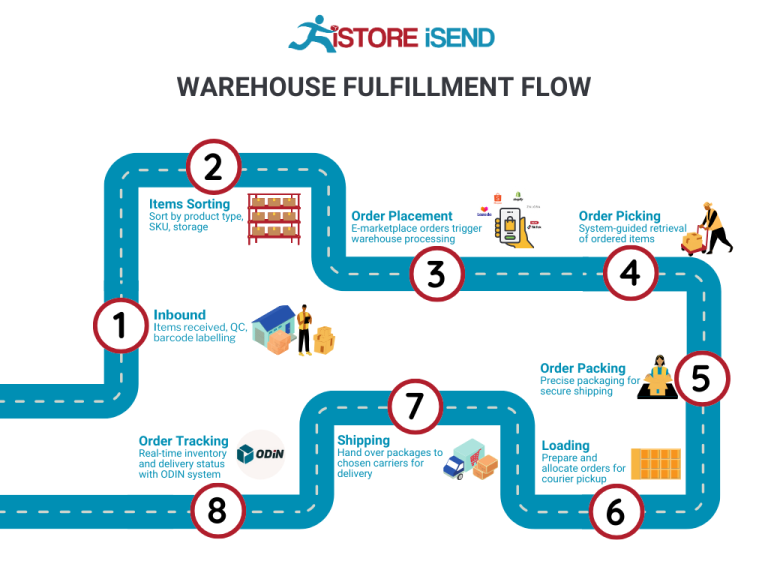
A packing slip, which details the contents of the package, should be included to provide customers with a clear summary of their order. Additionally, this is the stage where shipping labels are generated, often incorporating a tracking number that customers can use to monitor their orders. Effective packing not only protects products but also enhances the overall customer experience, as well-packaged items reflect professionalism and care.
5. Shipping & Delivery
The final step in the order fulfillment process is shipping and delivery. Once the packages are packed, they are handed over to shipping carriers for delivery. This stage is critical for ensuring that products reach customers in a timely manner, which is a key factor in customer satisfaction.
Selecting the right shipping options—such as standard, expedited, or same-day delivery—can impact both costs and delivery times. Businesses should consider partnering with multiple carriers to provide customers with various shipping choices. Additionally, using tracking systems allows both the business and the customer to monitor the shipment’s progress, enhancing transparency.
In conclusion, an efficient order fulfillment process is integral to the success of any e-commerce business. By mastering each step—from receiving inventory to shipping and delivery—businesses can scale operations, improve customer satisfaction, and ultimately drive sales growth.
Comparing Fulfillment Models: In-House vs. 3PL vs. Dropshipping
Fulfillment Model Comparison
| Model | Who Handles Inventory | Best For (Business Stage) | Key Advantage | Key Disadvantage |
|---|---|---|---|---|
| In-House Fulfillment | The business itself | Established businesses with stable demand | Full control over inventory and operations | High overhead costs and operational complexity |
| Third-Party Logistics (3PL) | An external logistics provider | Growing businesses needing scalability | Flexibility and expertise in logistics | Less control over inventory and potential hidden fees |
| Dropshipping | Suppliers or manufacturers | Startups and businesses testing markets | Low upfront investment and no inventory risk | Lower profit margins and reliance on supplier reliability |
In-House Fulfillment
In-house fulfillment is when a business manages its own inventory and order fulfillment processes. This model is best suited for established businesses with stable demand for their products. The key advantage of in-house fulfillment is the full control it provides over inventory management, order processing, and shipping logistics. Businesses can tailor their operations to meet specific customer needs and can quickly adapt to market changes or product launches. However, this control comes with significant disadvantages, particularly high overhead costs associated with warehousing, staffing, and maintaining equipment. Additionally, the operational complexity increases as businesses must manage all aspects of the supply chain, from inventory storage to shipping logistics, which can strain resources and focus.
Third-Party Logistics (3PL)
Third-party logistics (3PL) involves outsourcing fulfillment and logistics operations to specialized providers. This model is particularly beneficial for growing businesses that require scalable solutions without the burden of managing logistics in-house. The primary advantage of 3PL is the flexibility and expertise it offers; businesses can leverage the 3PL’s established infrastructure, knowledge, and technology to enhance efficiency and focus on core competencies like marketing and product development. However, a key disadvantage is the reduced control over inventory management and shipping processes, which can lead to challenges in meeting customer expectations. Additionally, businesses may encounter hidden fees or service charges, which can impact profit margins if not properly understood and managed.
Dropshipping
Dropshipping is a fulfillment model where retailers sell products without holding inventory. Instead, when a retailer sells a product, it purchases the item from a third party, who then ships it directly to the customer. This model is ideal for startups and businesses looking to test new markets without a significant upfront investment in inventory. The primary advantage of dropshipping is the low financial risk, as businesses do not need to invest in stock upfront, reducing the burden of inventory management. However, dropshipping also comes with notable disadvantages, including lower profit margins due to wholesale pricing and reliance on suppliers for inventory quality and shipping reliability. Additionally, businesses may face challenges with order fulfillment times, which can affect customer satisfaction and brand reputation if suppliers do not meet expectations.
Conclusion
Choosing the right fulfillment model is a critical decision for e-commerce business owners and operations managers aiming to scale their sales and logistics. In-house fulfillment offers control and customization but comes with higher costs and complexity. On the other hand, 3PL provides flexibility and specialized expertise, making it suitable for growing businesses, albeit with less control. Finally, dropshipping presents a low-risk entry point for new businesses but can lead to challenges in profit margins and supplier reliability. Each model has its strengths and weaknesses, and the choice should align with the specific goals, resources, and market dynamics of the business.
A Deep Dive into Amazon FBA: Pros, Cons, and Who It’s For
Understanding Fulfillment by Amazon (FBA)
Fulfillment by Amazon (FBA) is a service provided by Amazon that allows sellers to store their products in Amazon’s fulfillment centers. This service takes care of storage, packaging, and shipping of products directly to customers. Sellers using FBA benefit from Amazon’s vast logistics network, ensuring that their products are delivered quickly and efficiently. When a customer places an order, Amazon handles the entire fulfillment process, including customer service and returns, allowing sellers to focus on other aspects of their business, such as marketing and product development.
How FBA Works
-
Setup: To get started, sellers create an Amazon seller account and choose FBA as their fulfillment method. They then prepare their products according to Amazon’s guidelines and ship them to designated fulfillment centers.
-
Storage: Once received, products are stored in Amazon’s warehouses. Amazon tracks inventory levels and notifies sellers when it’s time to restock.
-
Order Fulfillment: When a customer orders a product, Amazon picks, packs, and ships the item on behalf of the seller. This process is usually very efficient, leveraging Amazon’s advanced logistics infrastructure.
-
Customer Service: Amazon manages customer service inquiries and returns for FBA products, providing a seamless experience for customers.
-
Fees: Sellers are charged various fees for using FBA, including fulfillment fees based on product size and weight, and monthly storage fees for inventory held in Amazon’s warehouses.
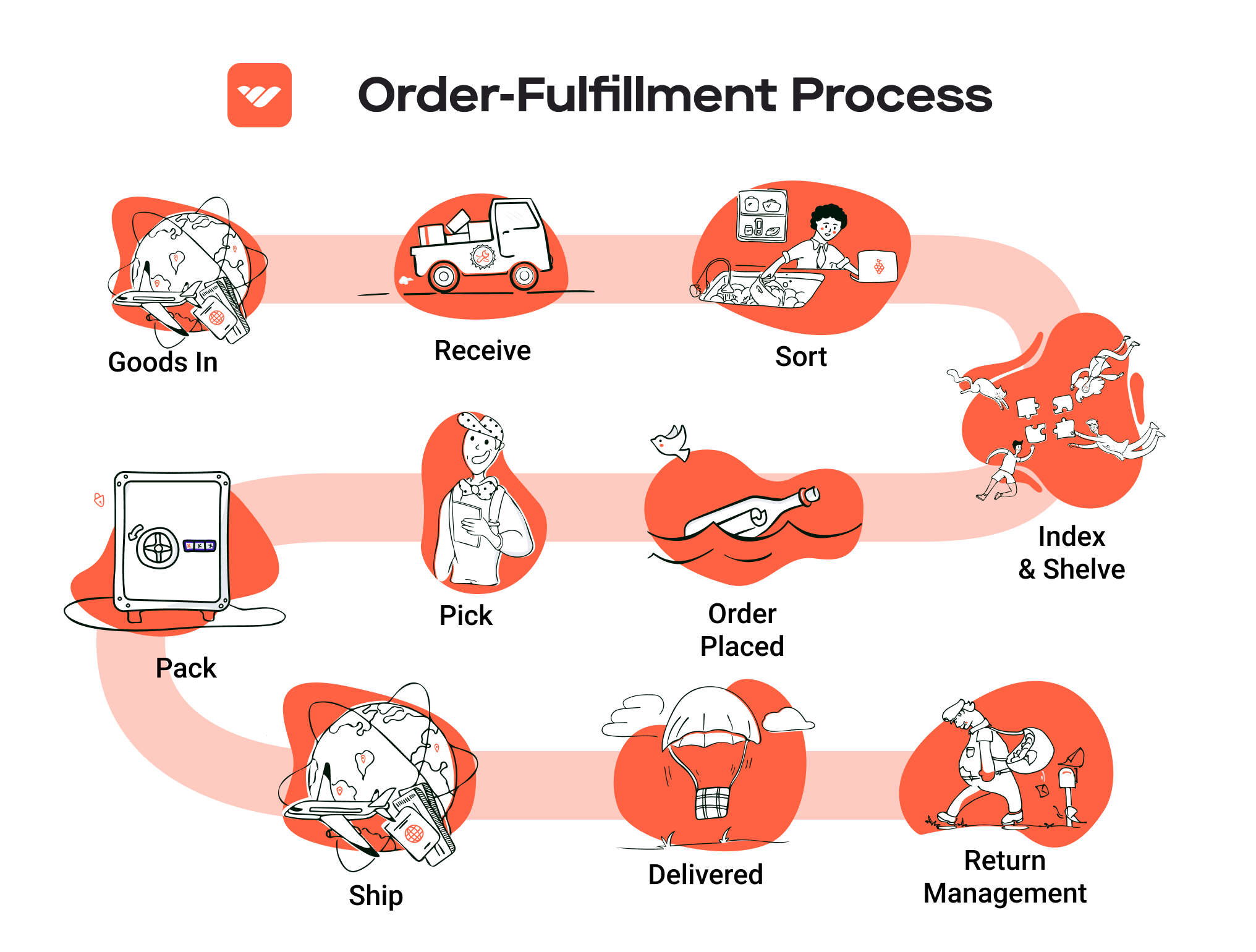
Pros of Using FBA
-
Prime Eligibility: Products fulfilled by Amazon are automatically eligible for Amazon Prime, offering sellers access to millions of Prime members who prefer fast, free shipping.
-
Customer Trust: Leveraging Amazon’s reputation enhances customer trust. Buyers often feel more secure purchasing items that are backed by Amazon’s fulfillment and customer service.
-
Multi-Channel Fulfillment: FBA can be used for orders from other sales channels, such as an independent website or other e-commerce platforms, allowing for a unified fulfillment process across multiple platforms.
-
Scalability: FBA allows sellers to scale their businesses without worrying about the logistics of storage and shipping. As sales increase, Amazon can handle the increased volume of orders.
-
Time Savings: By outsourcing fulfillment, sellers can focus on other critical areas of their business, such as product sourcing, marketing, and customer engagement.
Cons of Using FBA
-
High Fees: FBA comes with various fees, including fulfillment fees, storage fees, and potential long-term storage fees for items that do not sell quickly. These fees can significantly eat into profit margins.
-
Strict Inventory Rules: Amazon has stringent guidelines regarding inventory management. Sellers must ensure their inventory is well-organized and compliant with Amazon’s policies to avoid penalties.
-
Commingling Risks: FBA products may be commingled with other sellers’ inventory, which can lead to issues if a product is returned or if a seller’s products are damaged. This risk can affect brand reputation and customer satisfaction.
-
Loss of Control: By using FBA, sellers relinquish some control over the fulfillment process, including packaging and shipping methods. This may not align with every brand’s strategy, especially those that prioritize unique packaging or customer experience.
-
Complex Returns Process: While Amazon handles customer returns, the process can be complex for sellers. Returned items may not always be in a sellable condition, impacting inventory and profits.
Who is FBA Best For?
FBA is particularly well-suited for:
-
Small to Medium-Sized Businesses: Businesses looking to scale quickly can benefit from the efficiency of Amazon’s fulfillment network without investing heavily in their own logistics.
-
E-commerce Entrepreneurs: Those new to selling online can leverage FBA to simplify the logistics process while focusing on product development and marketing.
-
Brands Seeking Trust: Sellers looking to build brand credibility can benefit from the trust associated with Amazon’s customer service and fulfillment capabilities.
-
High-Volume Sellers: Businesses that anticipate high sales volumes can maximize the benefits of FBA, as the service can handle increased order volumes with ease.
-
Multi-Channel Sellers: Brands that sell on multiple platforms can use FBA to streamline their fulfillment processes, ensuring consistency across all sales channels.
In conclusion, while Fulfillment by Amazon offers numerous advantages, particularly in terms of logistics efficiency and customer trust, it also comes with its share of challenges. Sellers must carefully evaluate their business model, product types, and profit margins to determine if FBA aligns with their operational goals.
Core Services Offered by Fulfillment Centers
Inventory Management & Warehousing
Inventory management and warehousing are foundational services provided by fulfillment centers, enabling e-commerce businesses to efficiently store and track their products. Fulfillment centers typically utilize sophisticated inventory management systems that offer real-time tracking of stock levels, allowing businesses to maintain optimal inventory levels and reduce the risk of stockouts or overstock situations.
The benefits of effective inventory management are significant. By outsourcing this function, e-commerce businesses can focus on their core competencies, such as marketing and customer service, rather than getting bogged down in logistical challenges. Advanced inventory management systems also provide insights into sales trends and demand forecasting, enabling businesses to make informed purchasing decisions. This leads to better cash flow management and maximizes return on investment by ensuring that inventory is aligned with customer demand.
Pick and Pack Services
Pick and pack services refer to the process of retrieving ordered items from storage (picking) and preparing them for shipment (packing). Fulfillment centers streamline this process by employing trained staff and efficient technology, ensuring that orders are processed quickly and accurately. This service is essential for maintaining a high level of customer satisfaction, as prompt and accurate order fulfillment directly impacts a business’s reputation.
The primary benefit of pick and pack services is speed. Fulfillment centers often operate under strict service level agreements (SLAs) that dictate how quickly orders should be processed. By leveraging the expertise of fulfillment center staff, e-commerce businesses can reduce order processing times significantly, leading to faster shipping and improved customer experiences. Additionally, the accuracy of these services minimizes the likelihood of errors, such as shipping the wrong item or quantity, which can lead to costly returns and damage customer relationships.
Kitting and Assembly
Kitting and assembly involve grouping individual items into ready-to-ship sets or assembling components into finished products. This service is particularly valuable for e-commerce businesses that sell products requiring assembly or those that offer bundled items, such as gift sets or promotional packages.
The advantages of kitting and assembly services are multifaceted. By outsourcing these tasks to fulfillment centers, businesses can reduce their in-house labor costs and minimize the time spent on complex packaging tasks. This not only increases operational efficiency but also enhances the product presentation, which is crucial for attracting customers. Well-packaged products can improve perceived value, leading to higher sales. Furthermore, kitting allows businesses to manage inventory more effectively by reducing the number of SKUs (stock keeping units) they need to track, simplifying inventory management processes.
Returns Management (Reverse Logistics)
Returns management, or reverse logistics, is a critical service provided by fulfillment centers that focuses on handling product returns efficiently. This process involves receiving returned items, inspecting them, restocking them if they are in sellable condition, or managing their disposal if they are not. Fulfillment centers often have established protocols for processing returns quickly, which can significantly enhance customer satisfaction and loyalty.
The benefits of effective returns management are substantial. First, it helps maintain a positive customer experience even when a return is necessary. A streamlined return process can encourage customers to make future purchases, knowing that they can return items easily if needed. Additionally, efficient returns management helps businesses recover value from returned items by quickly restocking sellable products or determining the best course of action for damaged goods. This not only reduces losses but also provides valuable data on product performance and customer preferences, informing future inventory decisions and product development.
In summary, the core services offered by fulfillment centers—inventory management and warehousing, pick and pack services, kitting and assembly, and returns management—are essential for e-commerce businesses looking to scale. By leveraging these services, businesses can enhance operational efficiency, improve customer satisfaction, and ultimately drive sales growth. As the e-commerce landscape continues to evolve, partnering with a capable fulfillment center can be a strategic advantage for any business aiming to thrive in a competitive market.
How to Choose a Fulfillment Partner: A 6-Point Checklist
Location & Warehouse Network
Choosing a fulfillment partner with strategically located warehouses can significantly influence your shipping costs and delivery times. A well-distributed warehouse network allows for faster shipping to your customer base and can reduce transportation costs.
Questions to Ask:
– Where are your warehouses located?
– How do these locations align with our target market?
– What is your average shipping time from each warehouse?
– Do you offer same-day or next-day shipping options?
Technology & Integrations
In today’s digital landscape, the technology that a fulfillment partner uses is crucial. Their systems should seamlessly integrate with your e-commerce platform, inventory management systems, and customer relationship management (CRM) tools. This ensures real-time visibility into inventory levels and order statuses, which is vital for efficient operations.
Questions to Ask:
– What technology do you use for order management and tracking?
– Can your systems integrate with our existing e-commerce platform (e.g., Shopify, WooCommerce)?
– Do you provide an API for custom integrations?
– How do you handle inventory management and reporting?
Specializations (e.g., Cold Storage, Oversized Items)
Different businesses have unique needs based on their product types. If you sell perishable goods, oversized items, or fragile products, it’s essential to select a partner who specializes in those areas. This ensures that your products are stored and handled appropriately, which can reduce waste and damage.
Questions to Ask:
– Do you have experience handling our specific product types?
– What special storage conditions do you provide (e.g., temperature control for perishables)?
– How do you manage the handling and shipping of oversized items?
– Can you accommodate seasonal fluctuations in inventory?
Scalability & Capacity
As your business grows, your fulfillment needs will evolve. It’s important to choose a partner that can scale with you, whether that means increasing warehouse space, expanding shipping capabilities, or adapting to seasonal spikes in demand. A flexible partner can help you avoid the pitfalls of overcapacity or undercapacity.
Questions to Ask:
– How do you manage capacity during peak seasons?
– What is your current capacity, and how quickly can you expand it if needed?
– Do you have a plan in place for unexpected demand surges?
– How do you handle inventory overflow or excess stock?
Pricing and Contracts
Understanding the pricing structure is essential for managing your budget and ensuring profitability. Look for transparency in pricing, including all potential fees, such as storage fees, pick-and-pack fees, and shipping costs. Additionally, examine the terms of the contract to avoid any hidden fees or long-term commitments that could hinder flexibility.
Questions to Ask:
– What is your pricing structure? Are there additional fees we should be aware of?
– Can you provide a detailed breakdown of all potential costs?
– Are there any long-term contracts, and what are the terms for cancellation?
– Do you offer volume discounts or flexible pricing based on our needs?
Customer Support & Reviews
The quality of customer support can make or break your experience with a fulfillment partner. Look for a provider with a dedicated support team that can respond quickly to your inquiries and resolve issues efficiently. Additionally, researching customer reviews can provide insights into their reliability and service quality.
Questions to Ask:
– What support channels do you offer (e.g., phone, email, live chat)?
– What is your average response time for support inquiries?
– Can you provide case studies or references from current clients?
– How do you handle disputes or issues with orders?
Conclusion
Selecting the right fulfillment partner is a critical decision that can impact your e-commerce business’s growth and customer satisfaction. By considering these six essential factors and asking the right questions, you can ensure that you choose a partner who aligns with your business goals and can support your operational needs effectively. A thorough evaluation process will not only help mitigate risks but also enhance your overall logistics strategy, paving the way for scalable success in your e-commerce venture.
Understanding Fulfillment Pricing: A Breakdown of Common Fees
Initial Setup Fees
When starting with Amazon’s fulfillment services, businesses may encounter initial setup fees. These fees can vary based on the seller account type (Individual vs. Professional) and any additional services selected. For instance, Professional sellers typically pay a monthly subscription fee of $39.99, while Individual sellers incur a $0.99 fee per sale.
Setup fees might also include costs associated with integrating your inventory with Amazon’s systems, such as technology costs or setup of automated reporting tools. It’s crucial to assess these upfront costs against your expected sales volume to determine if your chosen seller account type aligns with your business goals.
Receiving Fees
Receiving fees are charged when your inventory arrives at Amazon’s fulfillment centers. These fees cover the costs of unloading, checking, and storing your products. The calculation is typically based on the size and weight of the products being received. For example, standard-size items may incur a lower receiving fee compared to oversized or bulky items, which require more handling and space.
To minimize receiving fees, ensure that your products are packaged according to Amazon’s requirements, as improper packaging may lead to additional handling fees or delays. Regularly review Amazon’s guidelines for receiving to optimize your inbound logistics.
Storage Fees (per pallet/bin)
Storage fees are charged for holding your inventory in Amazon’s warehouses. These fees can be categorized into two types: monthly storage fees and long-term storage fees. Monthly storage fees are calculated based on the total volume of space (in cubic feet) your products occupy in the fulfillment center at the end of each month.
As of 2024, Amazon has introduced a tiered pricing structure that distinguishes between standard-size and oversized items, with different rates applicable during peak and off-peak months. Long-term storage fees apply to products that remain in the fulfillment center for more than 365 days, encouraging sellers to manage their inventory efficiently. To avoid high storage fees, conduct regular inventory audits and implement effective inventory turnover strategies.
Pick & Pack Fees (per item/order)
Pick and pack fees are charged for each item that Amazon picks from its shelves and packs for shipping. This fee structure typically varies based on whether the product is standard size or oversized. For instance, standard items generally incur a lower fee compared to larger, bulkier items, which require more handling.
Additionally, if your order includes multiple items, the pick and pack fee may increase with each additional item. To manage these costs effectively, consider bundling products or optimizing your product offerings to reduce the complexity of orders. Understanding how these fees scale with order size can help you price your products more effectively.
Shipping Fees
Shipping fees are incurred when Amazon fulfills and ships your orders to customers. These fees are generally calculated based on the shipping method selected (Standard, Expedited, etc.) and the destination of the shipment. Amazon typically offers discounted shipping rates, which can benefit sellers, but it’s essential to understand that these costs are deducted from your sales revenue.
Sellers should factor in shipping fees when pricing their products to ensure profitability. Additionally, during peak seasons, such as holidays, shipping fees may increase, so it’s prudent to plan ahead and adjust your pricing strategy accordingly.
Tips for Getting an Accurate Quote
-
Utilize Amazon’s Fee Calculator: Before committing to selling on Amazon, use their fee calculator to estimate potential costs based on your product specifications. This tool can help you project your expenses more accurately.
-
Review Fee Structures Regularly: Amazon frequently updates its fee structures. Stay informed about any changes to ensure your pricing strategies remain competitive.
-
Analyze Your Product Mix: Different products incur varying fees; categorize your inventory to understand which items may lead to higher fulfillment costs. This analysis will allow you to make informed decisions on which products to focus on.
-
Consult with Fulfillment Experts: If you’re unsure about the best approach to manage fulfillment costs, consider consulting with e-commerce operations experts who can provide tailored advice based on your unique business model.
-
Negotiate Rates: If you anticipate high sales volumes, consider discussing volume discounts with Amazon or exploring other fulfillment options that might offer more favorable rates.
By understanding these common fulfillment pricing models and employing strategic approaches, businesses can optimize their operations and scale effectively on Amazon’s platform.
Frequently Asked Questions (FAQs) about Fulfillment
1. What are Amazon FBA fees and how are they structured?
Amazon FBA (Fulfillment by Amazon) fees consist of several components, including fulfillment fees, storage fees, and referral fees. Fulfillment fees are charged based on the size and weight of your products for picking, packing, and shipping. Storage fees apply for inventory stored in Amazon’s fulfillment centers, and referral fees are a percentage of the sale price for each product sold, typically around 15%.
2. How much do fulfillment services cost?
The cost of fulfillment services can vary widely depending on the provider and the specific services offered. For Amazon FBA, fulfillment fees are calculated based on product size and weight, while storage fees are based on the cubic feet occupied. On average, fulfillment fees can range from $2.50 to $5.00 per unit, while monthly storage fees can be around $0.75 per cubic foot for standard-size items.
3. What is the difference between a warehouse and a fulfillment center?
A warehouse is primarily a storage facility where goods are stored until needed, while a fulfillment center is a specialized warehouse designed to efficiently process, package, and ship orders directly to customers. Fulfillment centers are equipped with technology and processes to streamline order fulfillment, inventory management, and returns handling.
4. What is a 3PL and how does it relate to Amazon fulfillment?
A 3PL, or third-party logistics provider, offers services that include storage, fulfillment, and shipping. While Amazon FBA is a form of 3PL specifically for sellers on Amazon’s platform, other 3PLs may serve a broader range of e-commerce platforms. Choosing a 3PL can provide more flexibility, especially for sellers wanting to sell on multiple platforms beyond Amazon.
5. Are there any additional fees for using Amazon FBA?
Yes, in addition to the standard fulfillment and storage fees, Amazon FBA sellers may incur additional charges, such as long-term storage fees for inventory held for more than 365 days, removal fees for returning unsold inventory, and disposal fees for items that are no longer sellable.
6. How do I calculate my Amazon FBA fees?
To accurately calculate your Amazon FBA fees, consider using Amazon’s FBA calculator or third-party tools like Jungle Scout. Input your product’s dimensions, weight, and selling price to estimate your fulfillment, storage, and referral fees, helping you determine your potential profit margins.
7. What changes to Amazon FBA fees were announced for 2024?
In 2024, Amazon announced several changes to its FBA fee structure, including a reduction in referral fees for certain apparel products priced below $20 and adjustments to fulfillment and storage fees. These changes aim to support sellers, especially during peak seasons.
8. Can I use Amazon FBA for non-Amazon sales?
Yes, Amazon offers Multi-Channel Fulfillment (MCF) services that allow you to fulfill orders from other sales channels, such as your own website or other e-commerce platforms. However, MCF fees may differ from standard FBA fees, so it’s essential to factor those into your cost analysis.
9. How do storage fees work for Amazon FBA?
Storage fees are charged monthly for the inventory you have in Amazon’s fulfillment centers. There are two types of storage fees: standard monthly fees for inventory stored from January to September and higher peak fees for inventory stored from October to December. Additionally, long-term storage fees apply for items stored for over 365 days.
10. What factors should I consider when using Amazon FBA for my business?
When considering Amazon FBA, evaluate factors such as total fulfillment costs (including fees), shipping times, inventory management, and the impact on your profit margins. Additionally, consider your sales volume and whether the convenience of Amazon’s fulfillment services aligns with your overall business strategy.
Conclusion: Is Outsourcing Fulfillment the Right Move for Your Business?
Evaluating the Benefits of Outsourcing Fulfillment
Outsourcing fulfillment can be a transformative strategy for e-commerce businesses looking to scale. One of the most significant advantages is the time savings it affords. By delegating logistics tasks such as picking, packing, and shipping to a fulfillment partner, business owners can focus on core activities like product development and marketing. This shift not only enhances productivity but also allows for better strategic planning and execution.
Scalability is another critical benefit. As your sales grow, so do the complexities of managing inventory and order fulfillment. A reliable fulfillment service can easily accommodate increased order volumes without the need for substantial investment in warehouse space or additional personnel. This flexibility ensures that your operations can adapt to seasonal peaks or sudden spikes in demand, which is essential for maintaining customer satisfaction.
Moreover, partnering with an experienced fulfillment provider brings specialized expertise to your operations. These partners are well-versed in logistics best practices, compliance regulations, and technology integrations. Their knowledge can lead to improved shipping times, reduced costs, and enhanced customer experiences, positioning your business for long-term growth.
However, it’s crucial to choose the right fulfillment partner. Conduct thorough research and due diligence to ensure that their capabilities align with your business needs and growth objectives.
Next Steps for Your Business
To determine if outsourcing fulfillment is the right next step for your business, consider conducting a comprehensive audit of your current shipping process. Evaluate areas such as cost efficiency, order accuracy, and delivery times. By identifying pain points and opportunities for improvement, you can make an informed decision about whether a fulfillment partner could help propel your business forward. Embrace the potential of outsourcing, and set your sights on scaling your e-commerce success.
Important Disclaimer
⚠️ Important Disclaimer
The information in this guide is for educational purposes. Fulfillment services, pricing, and platform features change frequently. Always conduct your own due diligence and consult with providers directly before making business decisions.

